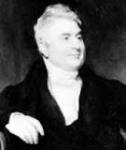I am well into the next phase of my pre-tirement plan – down to three days a week and, I must say, it is working well. When I am at work I find that a good portion of my time is filled not with the normal power lunches in which we lay plans for the world domination of the financial services industry but rather by ambling down the pleasant byways in the direction of nostalgia. Many of my contemporaries, unsurprisingly, are laying their plans for escaping the rat-race and it is instructive to compare notes.
And then there are the retirement gatherings. These are events that hitherto, rather like school reunions, I would have run a mile from but as my own retirement becomes every day more imminent there is a grim appeal to them. I know the attendees of these events are self-selecting – after all, you would only trouble to haul your carcass up to the City if you were fit and able – but the over-arching impression of those assembled is that they represent the epitome of rude health. A common theme of their conversation is that in their desire to keep busy and active in retirement they find that they have over committed and after a year of or so find that they have to wind down some of their post-retirement activities. The concept of retiring from retirement is an intriguing one.
A man must have a hobby, they say, and one of the benefits of having a leisurely approach to retirement is that it gives me time to determine how I will spend my leisure time. Drinking has always been a feature of my life, mainly bitters, and with a bit more time on my hands I have decided to broaden my experience and educate my palette. I’m not much of a spirits drinker – I have dabbled with whisky and whilst I like it, it doesn’t like me – I think you need a greater body mass index reading than I have to combat the effect on your innards – and a G&T is usually my tipple of choice.
Having previously only drunk the bog-standard gins produced by Gordon and the like I decided to see what all the fuss about so-called premium gins is all about. Rather like the suffix organic the first thing to note is that any gin with premium attached to its label retails at about twice the price of the ordinary stuff. Whilst in St Ives I found a delightful wine shop called Johns and after some deliberation decided on a bottle of Elemental Cornish Gin.
One evening I decided to sample (ie two stiff doubles) the hooch. The bottle has an appealingly stubby appearance and the top was sealed with wax and had a stopper, plastic rather than cork. Pouring the liquid into a glass with a couple of large ice cubes I took in the aromas and I must say that it smelt very different from the industrial gins I’m used to – a sort of peppery aroma. Adding a splash of tonic – it doesn’t do to drown the spirit – I took my first sip and, wow, what a difference. There was a subtle blend of tastes with more than a hint of citrus to the fore at the beginning but turning to a more bitter but immensely pleasurable aftertaste. The more I drank the more pronounced were the bitter flavours and, frankly, it took all of my iron will to limit myself to the two doubles I had allowed myself.
Organic English grain alcohol and up to 12 different botanicals are used in the mix which is then watered down with Cornish spring water to an acceptable 42% proof. Only 80 bottles are made per batch. I suppose I should go the whole hog and buy premium tonics – Fever-Tree seems to be the trendy one at the moment – make my ice cubes out of spring mineral water and use only organically grown lemons but, even for me, that may be a tad excessive.
Anyway, I am now on the hunt for other premium gins to try. Cheers!




